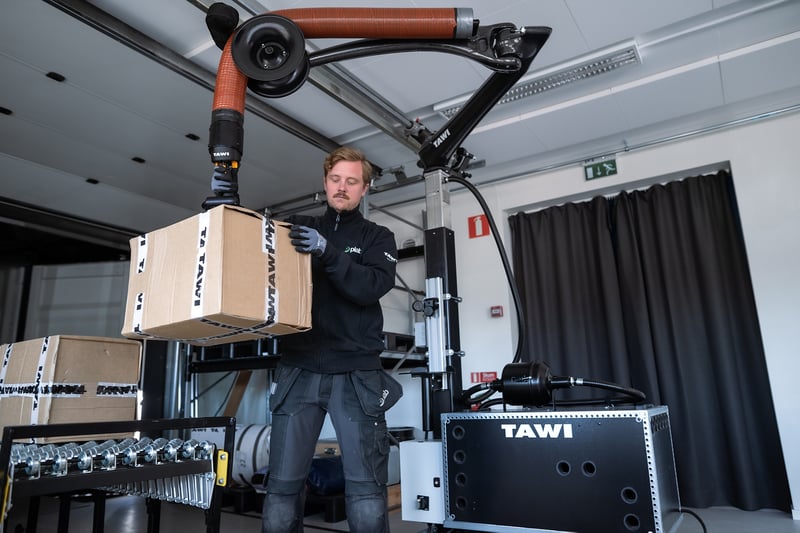
TAWI announces new mobile lifting solution for freight container unloading and portable lifting applications
TAWI, the inventor of the vacuum lift (also known as a vacuum tube lifter) has launched a new, portable vacuum lifter designed to be used inside of any ocean freight or box truck to reduce the manual lifting of materials during the loading or unloading process. This solution enables a more flexible workforce by reducing the need to team lift heavy objects while also minimizing the opportunity for injury. This is a faster, safer, and easier material handling method when compared to individual or team lifting of materials by hand.
Capable of lifting materials up to 90 lbs (40 kg), TAWI’s Mobile High-Frequency Lifter (MHL for short) is comprised of a vacuum lifter integrated into a portable jib crane on a base plate. With its trigger-style controller, the operator can lift and move products without exerting any lifting force and at a faster rate than performed manually. The MHL features a patented jib arm for low overhead spaces which is capable of horizontally gripping packages or materials to remove them from the top of a container or box truck. The unit is free-standing and powered by either a 3-phase electrical or an optional battery pack for completely cordless mobility. The MHL comes with a standard base plate design that any common forklift or pallet jack can support. This mobilizes the MHL to move around your facility and can be deployed for applications beyond container loading and unloading.
“Many businesses are seeing workforce issues in today’s complex economy. This can include locating, training, and retaining qualified material handling employees,” states Nick Hajewski, North American Marketing Director for TAWI. “A vacuum lift reduces this issue of locating human capital by reducing the number of material handlers needed to perform an existing task – especially when team lifting is required. It also opens these heavy lifting applications up to employees not physically capable of manual handling such weights, as the lift does the lifting for the operator – all the operator needs to be able to do is squeeze the control handle. So that’s the secret – less labor required, a faster performance due to a lack of physical fatigue, and at the end of the day, everyone is safer because they are not physically lifting the materials themselves.”









